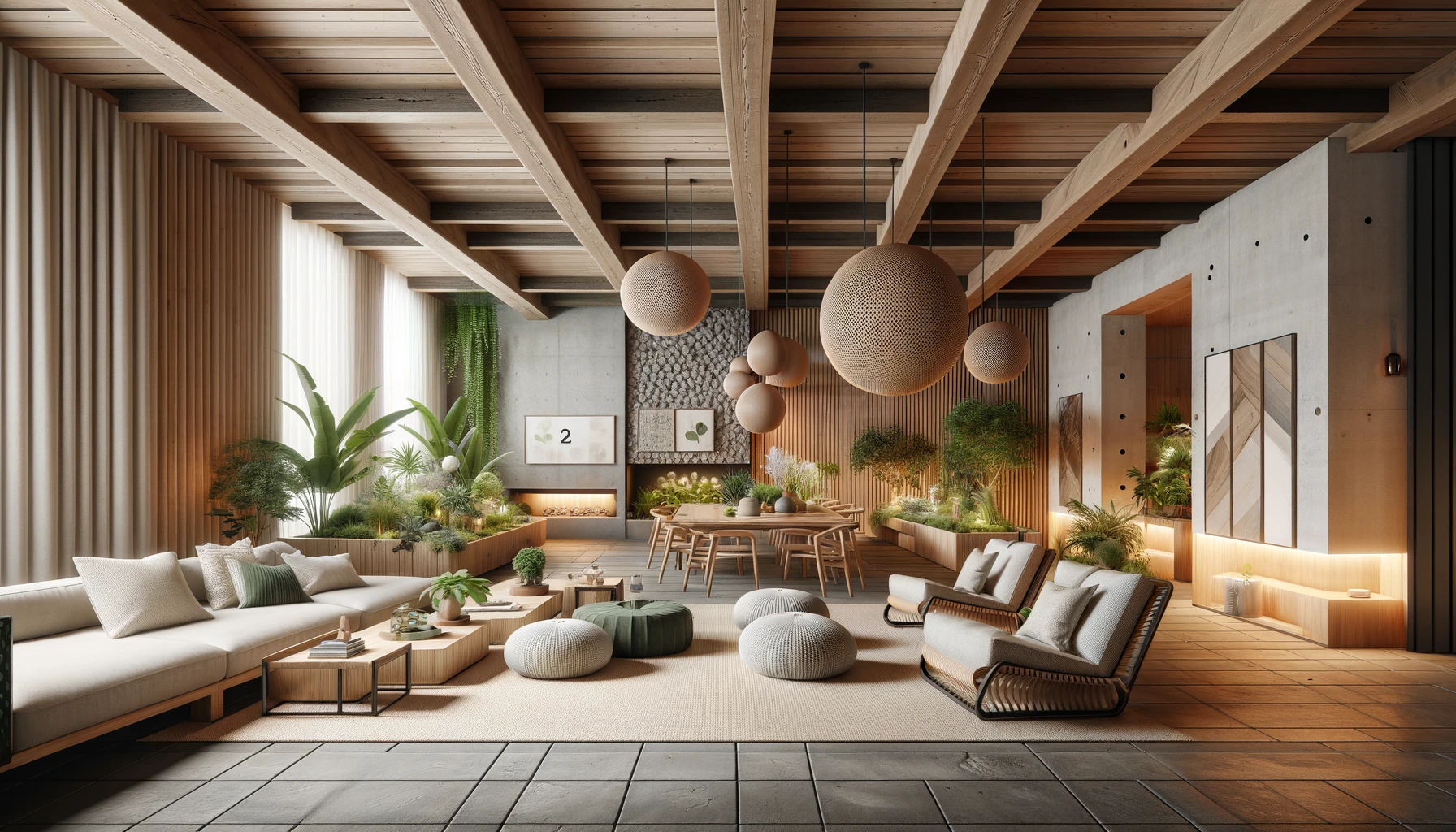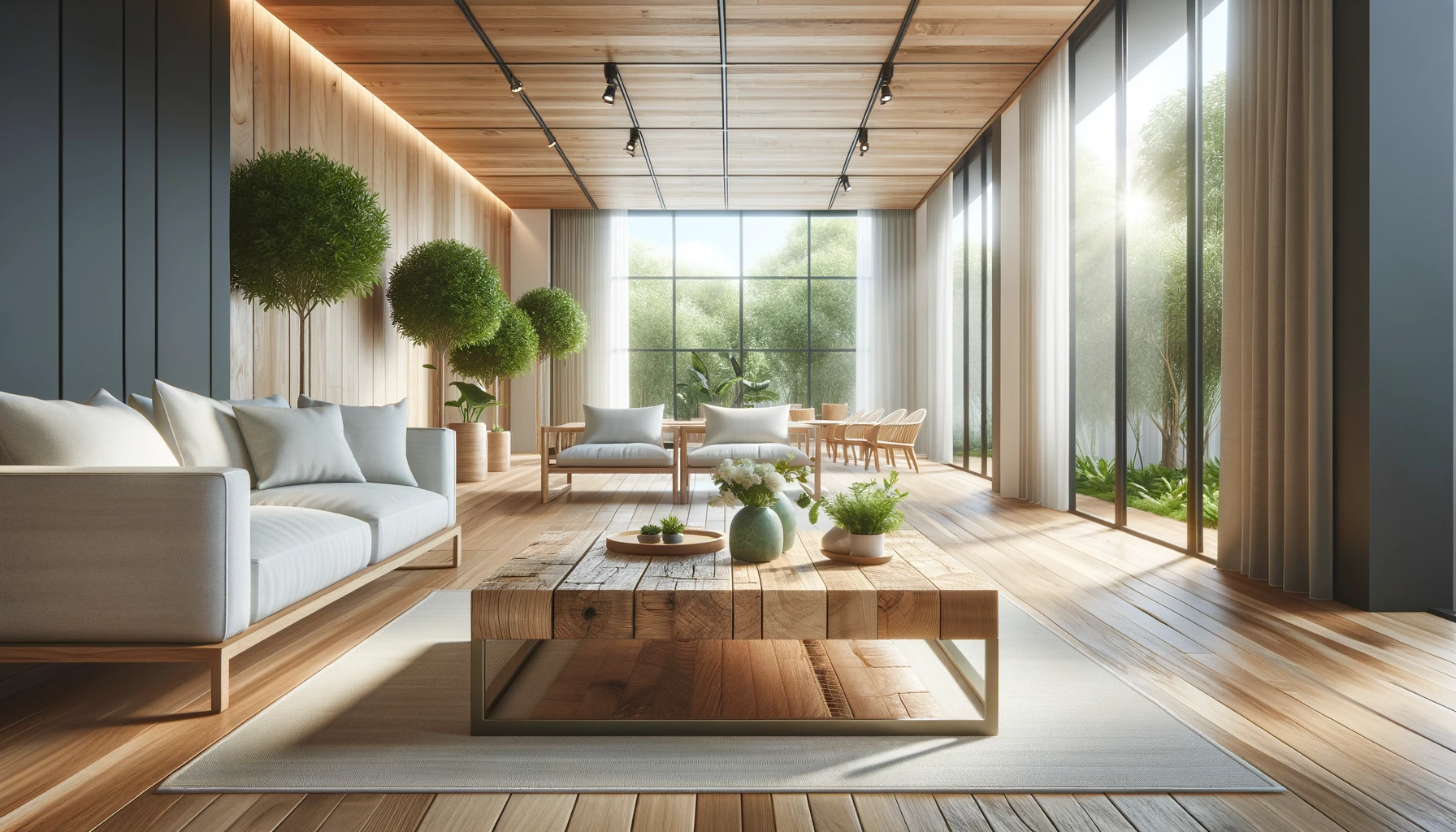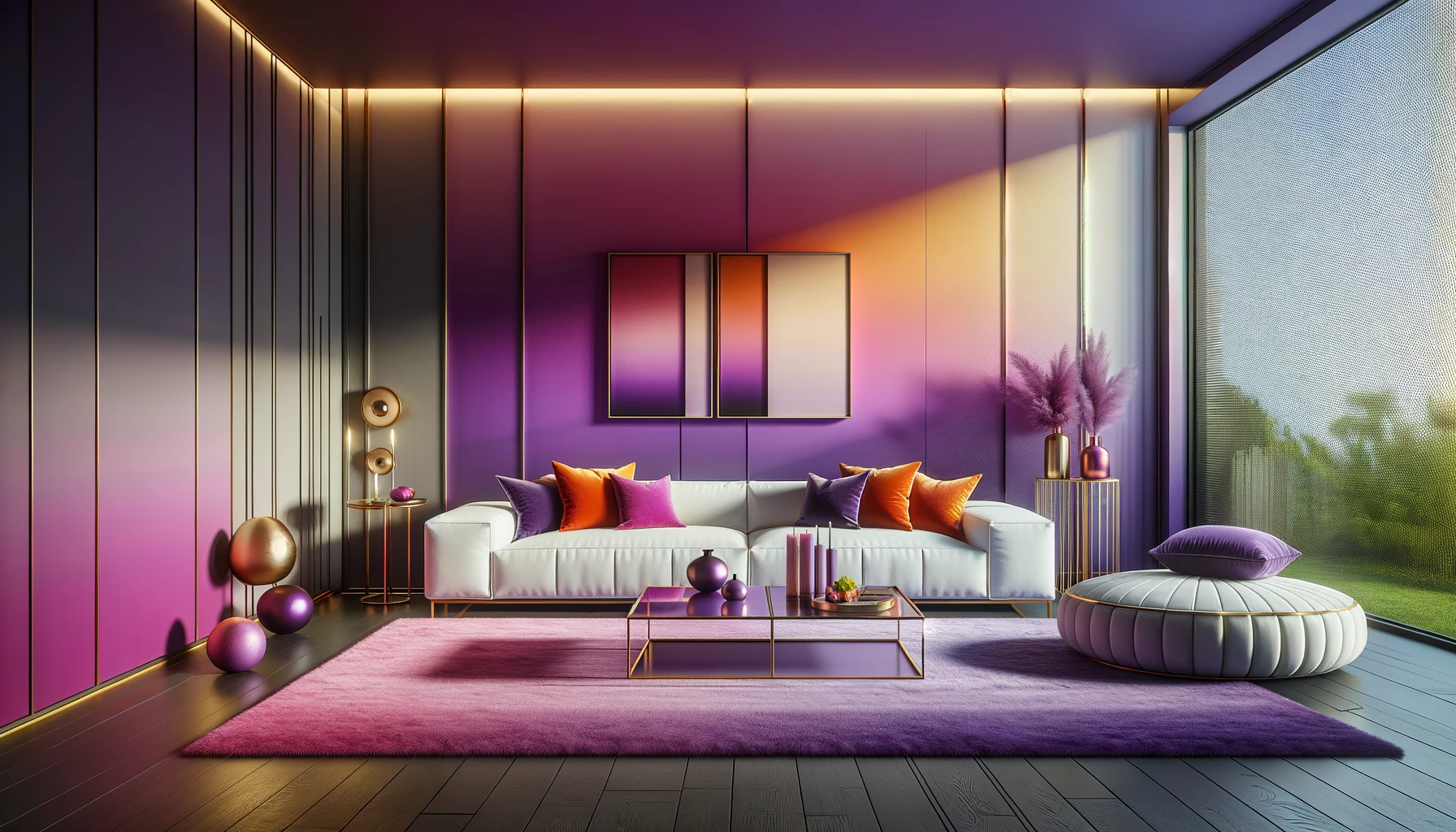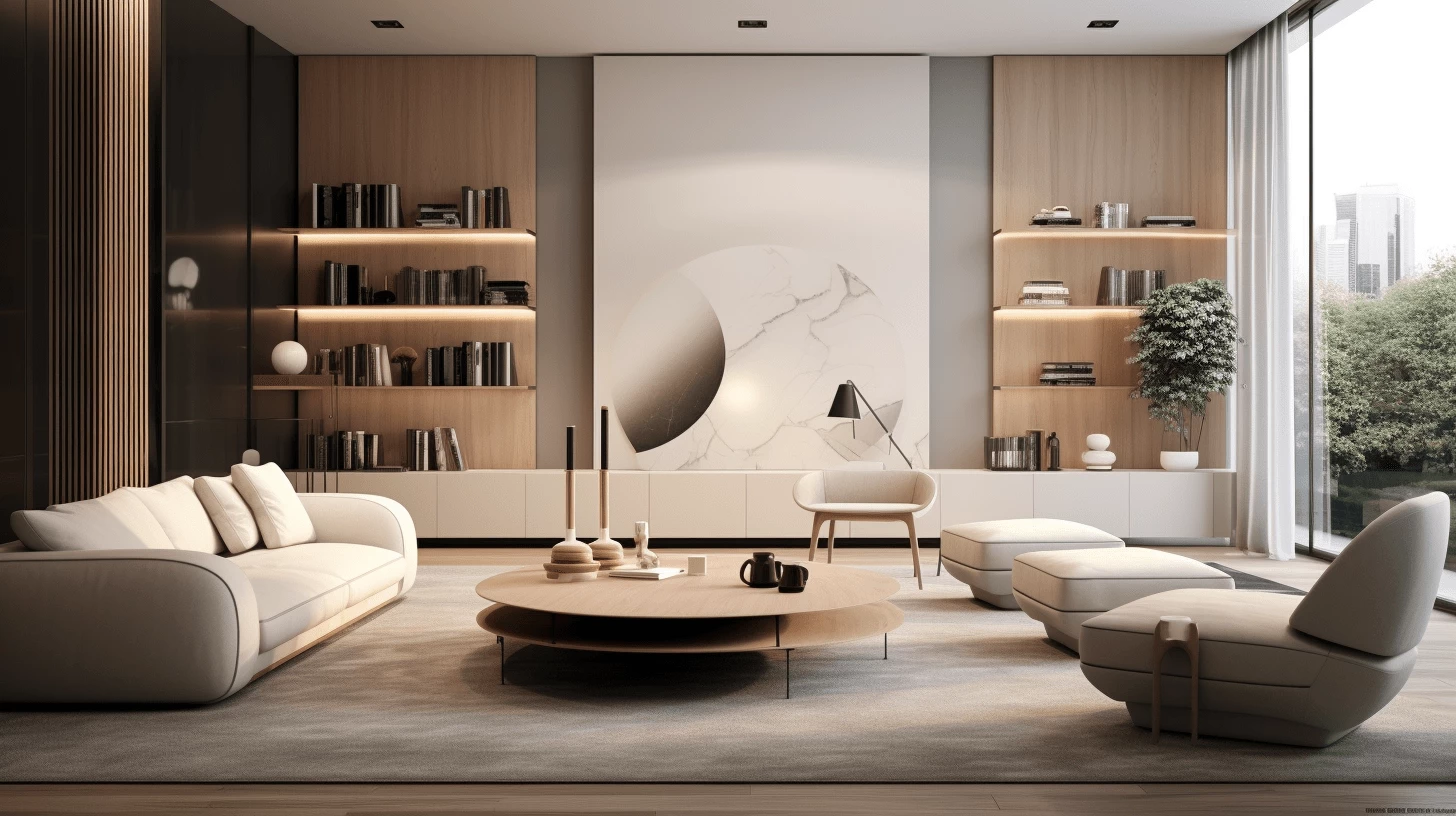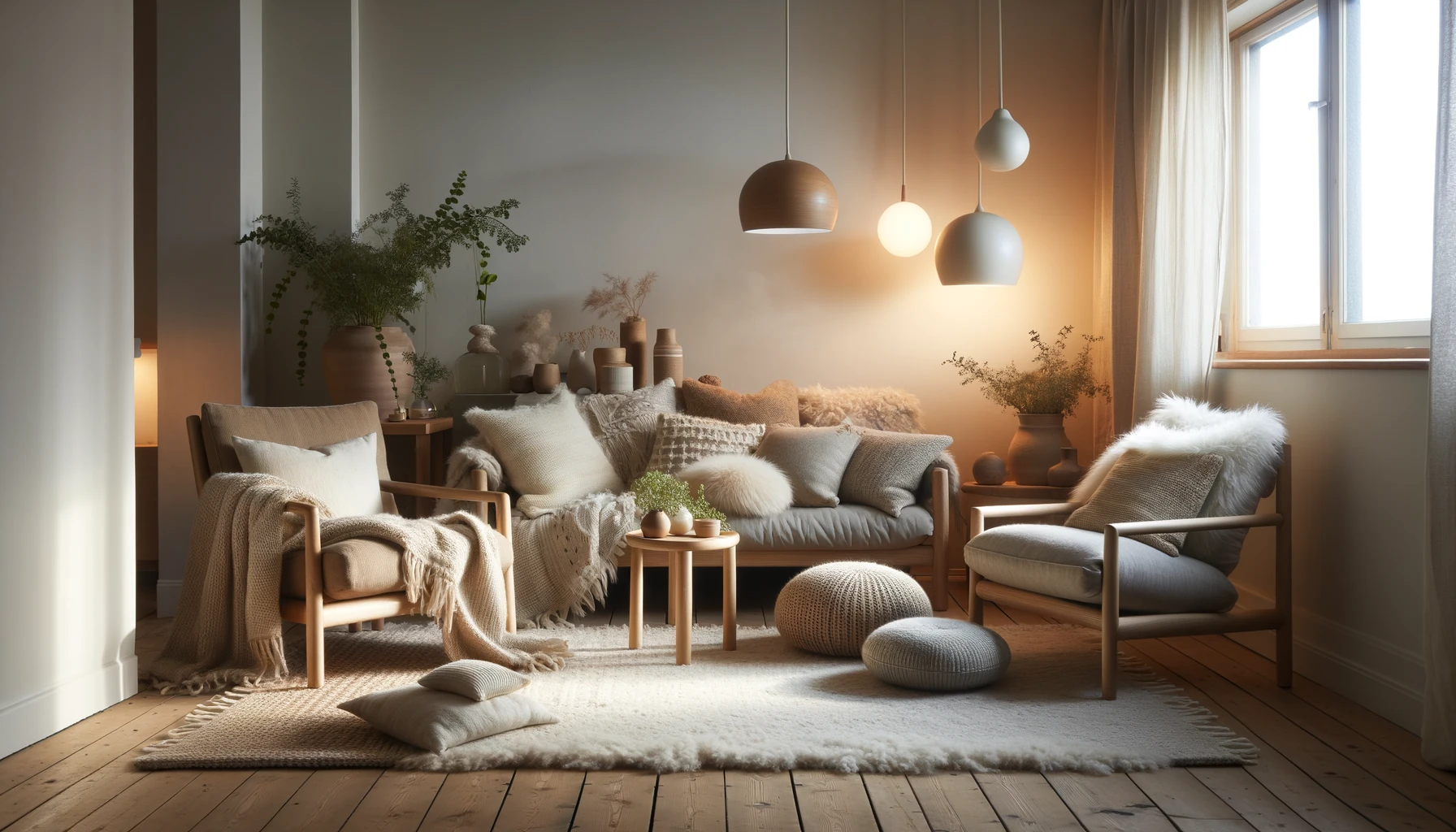Ever wondered how to bring the outdoors inside? Curious about transforming your lounge room into a tranquil oasis? Dive into the world of biophilic design trends for lounge rooms and discover how to create a harmonious space that connects you with nature. From incorporating natural elements like plants and natural light to embracing earthy color palettes and organic textures, biophilic design offers a refreshing approach to interior decor in living spaces. Explore innovative ideas that blur the lines between indoor and outdoor living, fostering a sense of calmness and rejuvenation in your home sanctuary.
Key Takeaways
- Incorporate Nature: Bring elements of nature like plants, natural light, and organic materials into your lounge room design to create a calming and rejuvenating space in your home.
- Stay Current with Trends: Stay updated with the latest biophilic design trends for 2024 to ensure your lounge room reflects modern aesthetics and functionality.
- Balance Technology and Nature: Integrate technology thoughtfully in your design to complement, not overpower, the natural elements in your lounge room.
- Consult Interior Designers: Seek guidance from interior designers who specialize in biophilic design to help you seamlessly blend nature into your lounge room while maintaining style and comfort.
- Prioritize Air Quality: Focus on enhancing air quality in your lounge room through proper ventilation, air-purifying plants, and natural materials to promote well-being and a healthier indoor environment.
- Create Harmonious Spaces: Combine color schemes and materials that mimic nature to create a harmonious and inviting atmosphere in your lounge room.
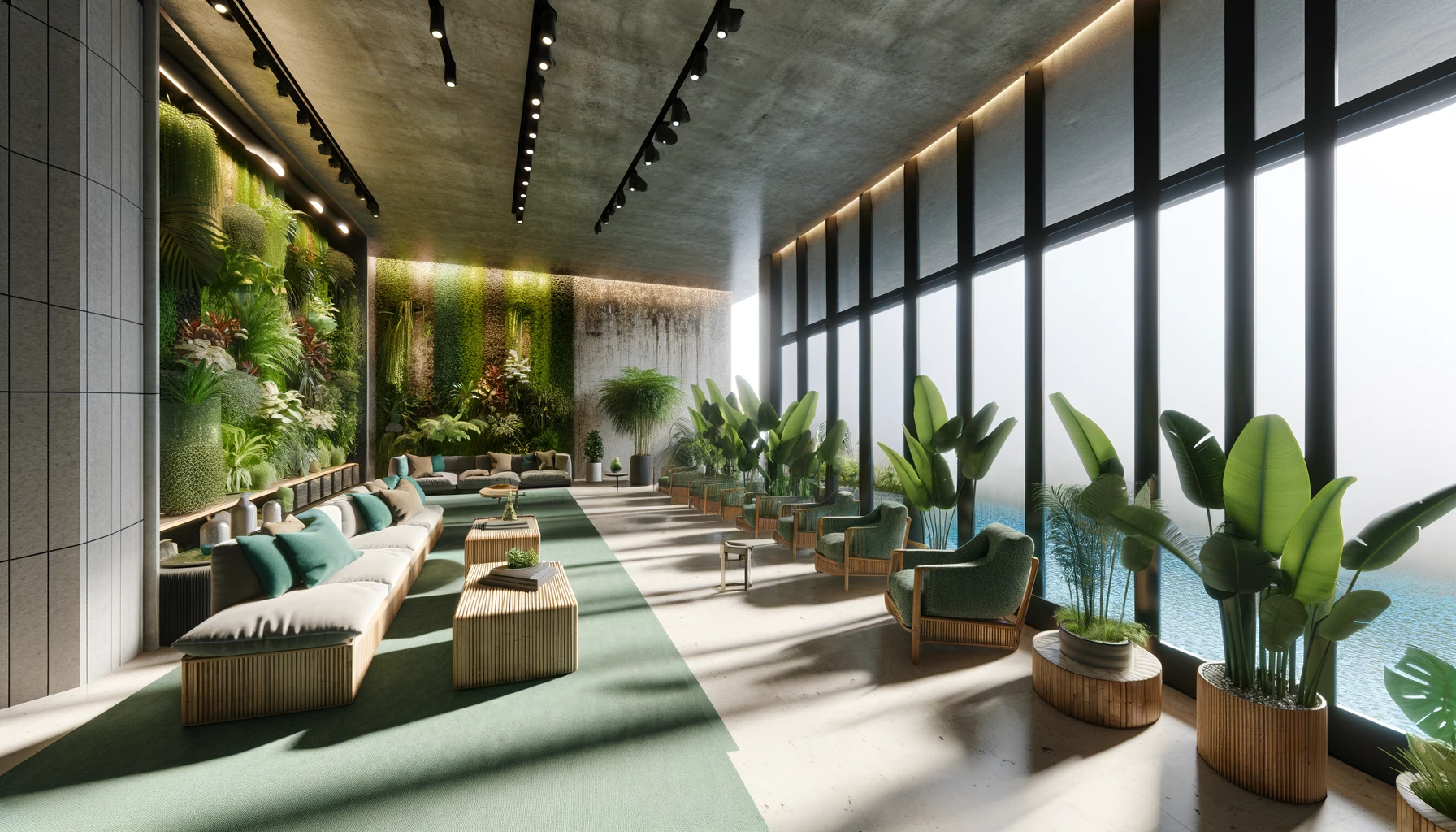
Understanding Biophilic Design
Biophilic design, with its focus on integrating natural elements into indoor spaces, offers numerous health benefits. One of the key advantages is the improvement in air quality. By incorporating plants and natural ventilation systems, biophilic design helps reduce indoor air pollutants. Air-purifying plants play a crucial role in filtering harmful substances from the air, contributing to a healthier lounge room environment.
Moreover, proper ventilation and filtration systems are essential components of biophilic design for maintaining good air quality. These systems ensure that fresh air circulates effectively within the space while eliminating impurities that can have adverse effects on health. In essence, by enhancing air quality through these methods, biophilic lounge rooms provide occupants with a cleaner and more refreshing atmosphere conducive to well-being.
Incorporating Biophilia in Lounge Rooms
Natural Elements
Natural elements like wood, stone, and water can transform lounge room designs into tranquil retreats. By introducing plants, living walls, or vertical gardens indoors, a connection to nature is established within the living space. These elements infuse lounge rooms with a calming ambiance that promotes relaxation and rejuvenation.
Pros:
- Creates a soothing atmosphere
- Enhances well-being
- Adds visual interest to the space
Cons:
- Requires maintenance for live plants
- May need adequate natural light sources
Designing lounge rooms with biophilic principles involves incorporating colors that mimic nature’s palette. Earthy tones such as greens, browns, and blues evoke feelings of being outdoors while fostering a sense of tranquility within the living area. Vibrant pops of color inspired by flowers or foliage inject energy and vibrancy into the space.
Key Information:
- Color selection impacts mood
- Colors influence perception of space
Design Elements
Materials
Choosing sustainable materials like bamboo, cork, or reclaimed wood aligns with biophilic design values by promoting environmental consciousness in lounge room decor. The use of these natural materials not only contributes to sustainability but also offers a tactile experience for occupants. Organic textures and finishes further enrich the sensory experience within the living area.
- Opt for sustainable materials like bamboo or cork.
- Consider using reclaimed wood for furniture pieces.
- Add depth to the space through organic textures.
Top Trends for 2024
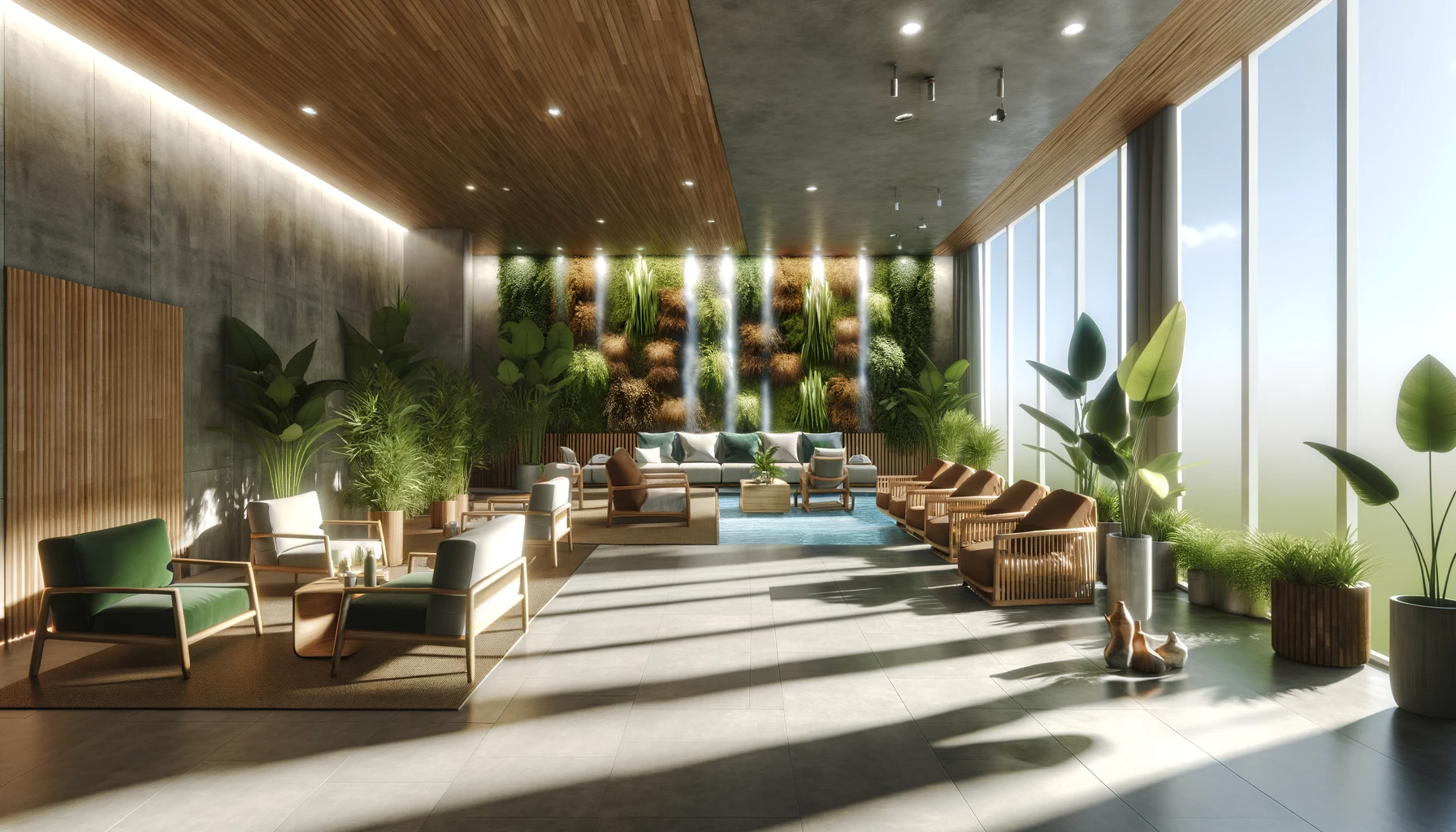
Living Walls
Living walls, also known as vertical gardens, are a rising trend in lounge rooms. These green installations not only enhance the aesthetics but also contribute to better air quality by absorbing pollutants. Imagine having a mini forest right in your living space! They act as natural sound barriers too, reducing noise levels and creating a peaceful ambiance.
In addition to their visual appeal, living walls serve as focal points for biophilic design. By incorporating these verdant features into lounge rooms, homeowners can create a refreshing and calming environment that mimics nature’s tranquility indoors. Customizable to fit any space or style, living walls offer versatility and flexibility in design possibilities.
Indoor Water Features
Indoor water features such as fountains or aquariums are gaining popularity as part of modern trends for lounge rooms. The gentle sound of flowing water from these elements brings a sense of serenity and relaxation into the indoor space. It’s like bringing the soothing essence of nature inside your home.
Apart from adding an aesthetic touch, indoor water features play a functional role by helping regulate humidity levels indoors. This is particularly beneficial during dry seasons when maintaining optimal moisture levels can be challenging. With the dual benefit of aesthetics and functionality, indoor water features are becoming must-have elements in contemporary lounge room designs.
Vertical Gardens
Vertical gardens offer an innovative way to infuse more greenery into lounge rooms while maximizing limited floor space. These upward-growing plant installations not only beautify the room but also promote improved air quality by releasing oxygen and filtering out toxins present indoors.
Natural Elements in Design
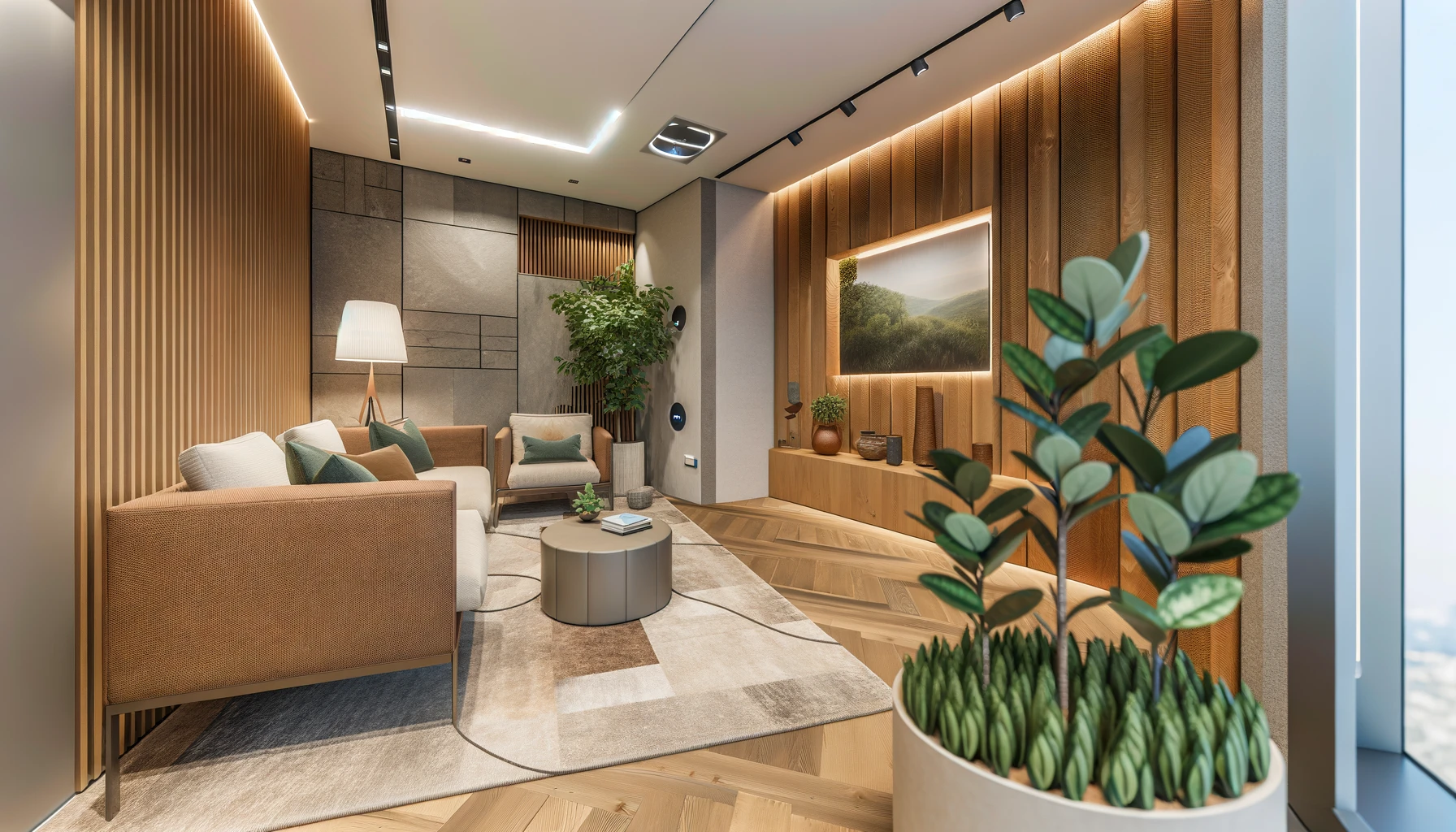
Wood is a key component of biophilic design trends for lounge rooms. It brings a sense of warmth and natural beauty to the space. By incorporating wooden furniture, flooring, or wall paneling, you can infuse the room with an organic touch that resonates with nature. Opting for sustainably sourced wood not only adds to the aesthetic appeal but also supports eco-friendly biophilic design practices.
On the other hand, stone accents are another popular choice for integrating natural elements into lounge rooms. Feature walls or fireplace surrounds made of natural stone can introduce texture and visual interest to the space. The use of stone creates a connection to the earth, providing a grounding effect that enhances the overall ambiance of the room. By incorporating these elements strategically, you can evoke feelings of tranquility and harmony within your biophilic design.
Plants play a pivotal role in biophilic design, acting as living elements that bring nature indoors. Strategically placing plants throughout your lounge room not only enhances its aesthetic appeal but also contributes to creating a more harmonious environment inspired by nature itself. Different plant species can be selected based on lighting conditions and maintenance requirements, allowing you to personalize your space while reaping the benefits of improved air quality and heightened well-being through biophilic principles.
Pros:
- Wood adds warmth and beauty
- Stone accents provide texture
- Plants enhance indoor air quality
Cons:
- Maintenance required for live plants
Color and Material Trends
Earth Tones
Earth tones like beige, brown, and terracotta are prevalent in biophilic design trends for lounge rooms. These colors bring a cozy feel to the space by resembling natural landscapes. When incorporated into furniture, textiles, or wall paint, they create a serene atmosphere that promotes relaxation.
In biophilic lounge room designs, earth tones play a crucial role in setting the tone for a warm and inviting ambiance. By using these colors strategically throughout the room, you can enhance the connection between indoor spaces and nature. Imagine having wooden furniture with soft beige cushions complemented by terracotta-colored throws; this combination would instantly transform your lounge into an oasis of tranquility.
Sustainable Materials
Sustainable materials are another key aspect of incorporating biophilic design trends into lounge rooms. Utilizing recycled or upcycled materials not only reduces environmental impact but also adds character to the space through unique furniture pieces. By opting for sustainable materials such as reclaimed wood or repurposed metal accents in your decor choices, you contribute to creating an eco-friendly living environment.
When choosing sustainable materials for your biophilic lounge room design, think about how each element can reflect nature’s beauty while minimizing harm to the environment. For example, consider using bamboo flooring or cork wall tiles instead of traditional options like hardwood or ceramic tiles. These choices not only add visual interest but also align with the principles of sustainability.
Technology Integration
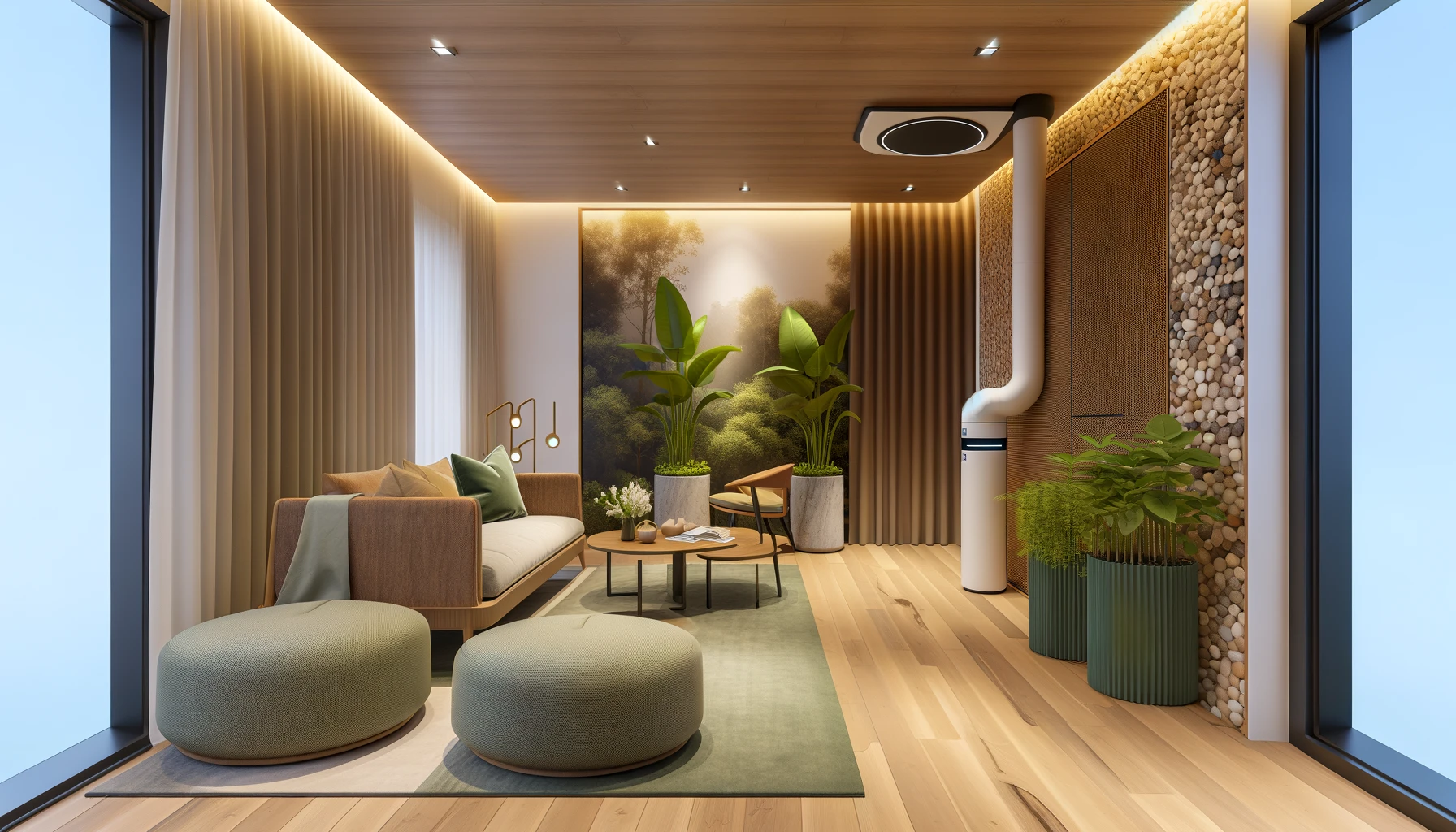
Smart Lighting
Smart lighting systems are a key component of biophilic design trends for lounge rooms. These systems adjust light levels to match natural circadian rhythms, promoting better sleep and overall well-being. By mimicking the patterns of natural daylight, smart lighting enhances the biophilic design concept in lounge spaces. Imagine waking up to soft, gradually increasing light that simulates a sunrise, creating a calming ambiance.
Incorporating smart lighting technology not only adds aesthetic value but also contributes to the wellness of individuals using the space. Picture being able to dim or brighten lights according to your mood or time of day effortlessly. This seamless integration with nature’s rhythms can significantly impact how you feel in your lounge room throughout the day.
Eco-Friendly Tech
Embracing eco-friendly technologies is another crucial aspect of biophilic lounge rooms. From energy-efficient appliances to smart thermostats, these elements reduce energy consumption while enhancing sustainability in interior spaces. Integrating renewable energy sources like solar panels aligns perfectly with sustainable design practices and reduces reliance on non-renewable resources.
Role of Interior Designers
Design Implementation
Biophilic design trends for lounge rooms rely heavily on the expertise of interior designers to bring nature indoors seamlessly. Through strategic layout planning and furniture arrangement, these professionals can create a space that fosters a deep connection with the natural world. By considering various viewpoints to incorporate elements like plants or natural light, designers enhance the overall ambiance of the room. Attention to detail is crucial in executing biophilic design principles effectively, ensuring that every aspect contributes to a cohesive and harmonious environment.
Customizing furniture pieces and incorporating built-in shelving are key strategies employed by interior designers when implementing biophilic design in lounge rooms. These custom solutions not only maximize space but also enhance functionality while maintaining a strong connection with nature. By tailoring designs according to individual preferences, designers create personalized spaces that feel inviting and comfortable. Custom solutions enable seamless integration of natural elements into the room’s architecture, further enhancing the biophilic experience for occupants.
Enhancing Air Quality and Well-Being
Ventilation Solutions
Proper ventilation is vital for biophilic lounge rooms to maintain air quality. Natural ventilation systems, such as operable windows or skylights, help in promoting airflow naturally. By incorporating these solutions, the lounge room can have a continuous flow of fresh air, reducing the need for artificial cooling or heating. This ensures that the environment remains comfortable and pleasant for occupants.
One significant benefit of having proper ventilation in biophilic lounge rooms is the enhancement of indoor air quality. These systems aid in filtering out pollutants and circulating clean air throughout the space efficiently. With improved air quality, individuals within the room experience better respiratory health and overall well-being. Therefore, integrating effective ventilation solutions plays a crucial role in creating a healthy and invigorating environment within lounge rooms.
Greenery Benefits
The presence of greenery in biophilic lounge rooms offers various advantages that contribute to enhancing well-being. Plants not only add aesthetic appeal but also play a crucial role in improving indoor air quality by absorbing toxins and releasing oxygen into the atmosphere. The inclusion of green elements has been proven to reduce stress levels among individuals occupying these spaces.
Furthermore, incorporating plants and natural elements into lounge rooms has shown to have positive effects on cognitive function. Studies indicate that being surrounded by greenery can boost concentration levels and productivity while reducing mental fatigue. Hence, integrating greenery into interior spaces not only enhances aesthetics but also provides tangible health benefits for occupants.
FAQs in Biophilic Design
Common Questions
Biophilic design trends for lounge rooms are gaining popularity, but many wonder how to incorporate these principles into small spaces. Thankfully, biophilic design can be adapted to any lounge room size or style, including compact areas. To maximize space, consider using hanging plants or vertical gardens to bring nature indoors without taking up valuable floor space.
Low-maintenance options are ideal for beginners or those with a busy lifestyle. Plants like snake plants, pothos, or succulents require minimal care and can thrive in various lighting conditions commonly found in indoor spaces. These plants not only add a touch of greenery but also contribute to improving air quality and overall well-being.
Achieving biophilic design on a budget is possible through creative solutions and utilizing existing natural elements within the space. DIY projects such as creating plant shelves from reclaimed materials or incorporating natural textures like wood and stone can enhance the connection to nature without breaking the bank. By repurposing items or upcycling decor pieces, you can infuse your lounge room with biophilic elements affordably.
Expert Answers
Biophilic design offers endless possibilities regardless of the size or layout of your lounge room; it’s all about fostering a connection with nature within your living space. Whether you have a cozy nook or an open-concept area, incorporating elements like natural light, greenery, and organic materials can create a harmonious environment that promotes relaxation and well-being.
For those looking for hassle-free plant options suitable for biophilic lounges rooms, low-maintenance varieties like spider plants, peace lilies, or ZZ plants are excellent choices that thrive indoors with minimal intervention. These resilient plants require infrequent watering and are forgiving if you forget them occasionally—perfect companions for busy individuals seeking to introduce nature into their home effortlessly.
Summary
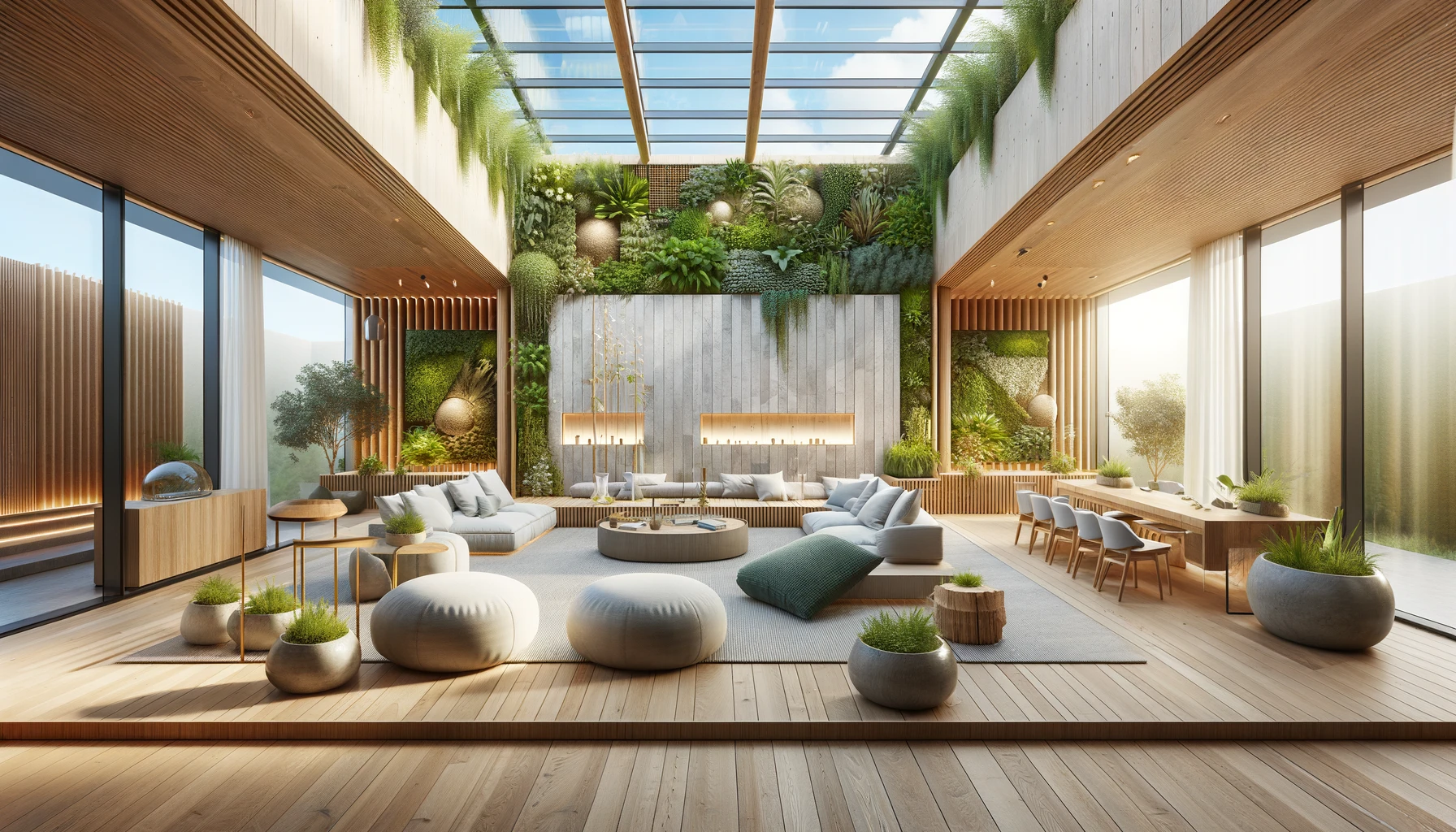
You’ve delved into the world of biophilic design for lounge rooms, exploring how nature can seamlessly blend with modern interiors. By incorporating natural elements, embracing color and material trends, and integrating technology thoughtfully, you can create a space that not only looks stunning but also enhances your well-being. Remember, interior designers play a crucial role in bringing these biophilic design trends to life, ensuring every aspect contributes to a harmonious and nature-inspired environment. Don’t forget the importance of air quality in your lounge room; it’s not just about aesthetics but also about creating a healthy space for you and your loved ones. Embrace these trends, let nature in, and watch as your lounge room transforms into a sanctuary of peace and tranquility.
Frequently Asked Questions
What is Biophilic Design and why is it important for lounge rooms?
Biophilic design incorporates natural elements into indoor spaces to enhance well-being. In lounge rooms, it creates a connection with nature, reduces stress, and improves air quality.
How can I incorporate Biophilia in my lounge room without major renovations?
You can introduce biophilic elements through houseplants, natural materials like wood or stone decor, nature-inspired artwork, or even using colors found in nature for your furniture and accessories.
Are there specific color schemes that work best for creating a biophilic atmosphere in lounge rooms?
Earth tones such as greens, browns, blues, and neutrals mimic the outdoors effectively. These colors promote relaxation and tranquility while bringing a sense of the natural world indoors.
Can technology be integrated into a biophilic design concept for lounge rooms?
Yes! Technology like smart lighting systems that mimic natural light patterns or air purifiers can complement biophilic design by enhancing comfort levels while still promoting a connection to nature.
How do interior designers play a role in implementing Biophilic Design principles in lounge rooms?
Interior designers are crucial as they have the expertise to blend aesthetics with functionality. They can help select appropriate materials, layout designs that optimize natural light exposure, and create harmonious spaces inspired by nature.
